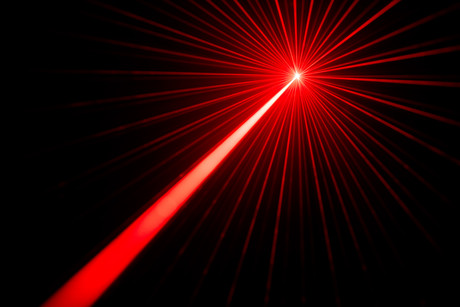Metal-silicone microstructures could enable new optical devices

Japanese and German researchers have used a single-step, laser-based method to produce small, precise hybrid microstructures of silver and flexible silicone. Their technology could one day enable smart factories that use a single production line to mass-produce customised devices combining soft materials, such as engineered tissue, with hard materials that add functions such as glucose sensing.
The fabrication method combines the chemical reactions known as photopolymerisation — which uses light to harden a polymer — and photoreduction — which uses light to form microstructures and nanostructures from metal ions — both of which were induced using femtosecond laser pulses. It resulted from a collaboration between Mitsuhiro Terakawa’s research group at Keio University, Japan — which had been studying two-photon photoreduction using soft materials — and a group at the German research organisation Laser Zentrum Hannover, which had been advancing single-photon photopolymerisation of a type of silicone known as polydimethylsiloxane (PDMS).
As detailed in the journal Optical Materials Express, the research team produced wire-like structures of silver surrounded by PDMS. They used PDMS because it is flexible and biocompatible, meaning that it is safer to use on or in the body.
To create the wire microstructures, which measure as little as 25 µm wide, the researchers irradiated the PDMS-silver mixture with light from a femtosecond laser emitting at 522 nm, a wavelength that interacts efficiently with the material mixture. They also carefully selected silver ions that would combine well with PDMS.
“We believe we are the first group to use femtosecond laser pulses to create a hybrid material containing PDMS, which is very useful because of its elasticity,” said Terakawa.

The researchers found that just one laser scan formed wires that exhibit both the electrical conductivity of metal and the elasticity of a polymer — a combination of properties that makes the structures sensitive to mechanical force and could be useful for making new types of optical and electrical devices. They showed that the wire structures responded to mechanical force by blowing air over the structures to create a pressure of 3 kPa. Additional scans could be used to produce thicker and more uniform structures, they added.
The researchers say that, in addition to making wires structures, the approach could be used to make tiny 3D metal-silicone structures. As a next step, they plan to study whether the fabricated wires maintain their structure and properties over time.
“Our work demonstrates that simultaneously inducing photoreduction and photopolymerisation is a promising method for fabricating elastic and electrically conductive microstructures,” said Terakawa. “This is one step toward our long-term goal of developing a smart factory for fabricating many human-compatible devices in one production line, whether the materials are soft or hard.”
3D semiconductor chip alignment boosts performance
Researchers have developed an ultra-precise method to align 3D semiconductor chips using lasers...
Researchers achieve 8 W output from optical parametric oscillator
Researchers have demonstrated a total output power of 8 W from a high-power mid-infrared cadmium...
"Dualtronic" chip for integrated electronics and photonics
Cornell researchers have developed a dual-sided chip known as a "dualtronic" chip that...






